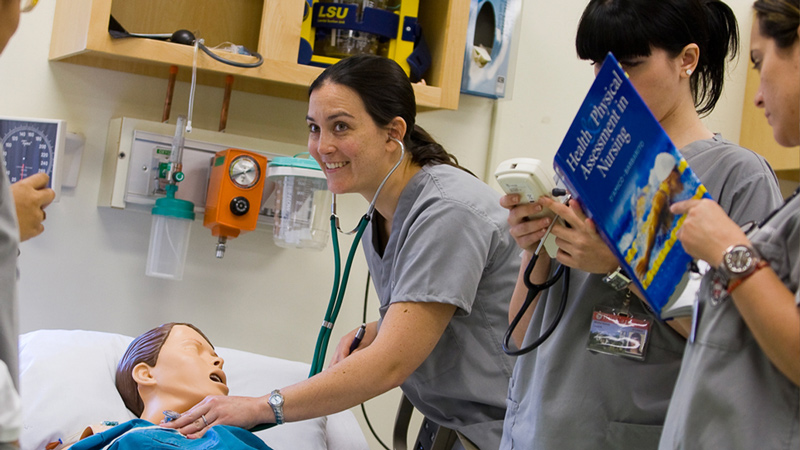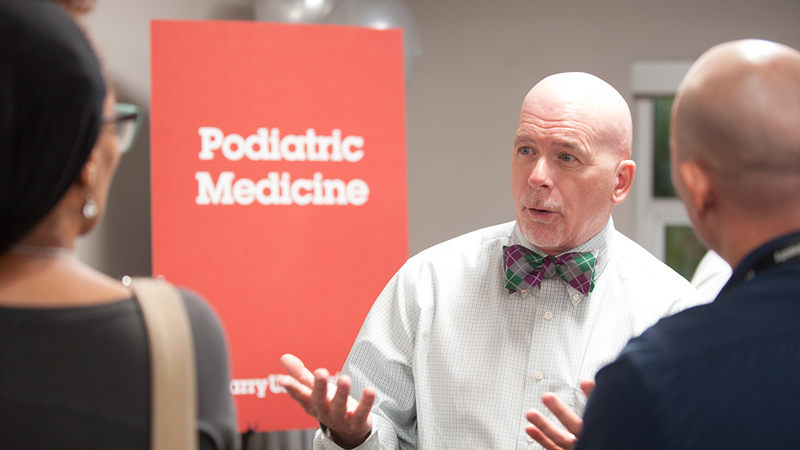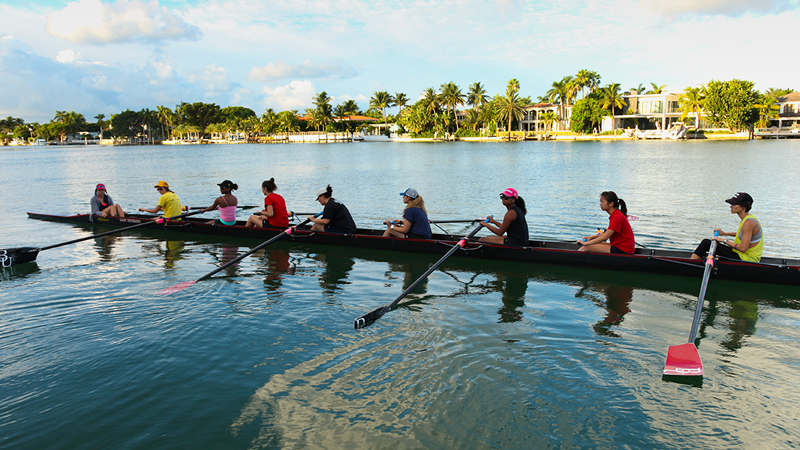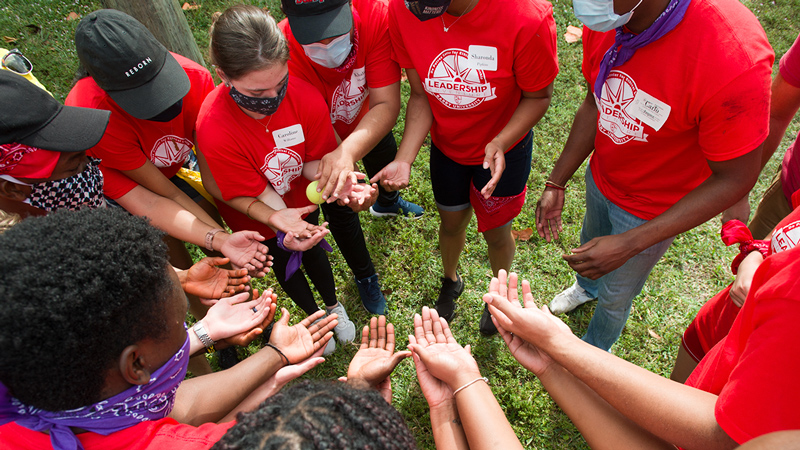This outline lays out general actions/precautions to be taken in advance of a Hurricane or Tropical Storm. Chartwells will follow Barry University guidelines as it relates to evacuation and return to the property.
These are the procedures to follow before, during, and after a storm or severe weather event. Please review with your associates and be sure copies of this outline are distributed to all associates.
PREPARATION:
- Emergency contact information given to our associates. If power and telephone lines are down, cell phones should be used.
- All cell phones should be fully charged prior to the storm.
- Pertinent clients contacted and given emergency/cell contact numbers. Discussions to be held on what type of service will be required during and after the storm.
- Vehicles at branch should be parked away from trees and branches. Associates driving vehicles home should be given the same instructions.
- Gas tanks on all vehicles should be filled prior to the storm, in the event there is no electricity following the storm.
- All monies from external locations to be brought to main branch and stored in secure location.
- Be sure adequate amounts of all non-perishable supplies are in the account prior to the storm.
- Refrigerated vehicles should be on "stand-by", if possible, in case we lose power at the account/branch, in order to handle perishable goods.
- In the threat of severe damage, all monies (imprest fund, collections, etc.) should be deposited prior to the storm, and then repurchased if necessary.
- A minimal supply of frozen inventory should be on hand at affected accounts. Day after contingency plan to obtain pre-pack product and appropriate distribution.
- Obtain an up-to-date listing of all associates' home phone numbers.
- An ample supply of bottled water should be available for use by both associates and customers if needed.
- Flashlights and spare batteries, etc. should be in all vehicles and in the account/branch.
- Fax lines do not always fail and may possibly be used as regular telephone lines.
- Limit use of all phones to non-emergency calls.
- Raise product to highest shelf level to avoid water damage.
- Transmit and/or back-up computer systems and place in fire safe.
- Rework delivery schedules to avoid traveling during storms.
- Forward cell phone communication network to Region and Division prior to the storm.
- Think "no power-no phones" - what will this do to our ability to get the job done?
- Turn off water to drink and coffee machines directly affected prior to water contamination.
- Chartwells should be prepared to send students who will go to shelters enough food and water for a minimum of three days.
DURING THE STORM:
- No heroics - associates should not report to work during the storm unless specifically instructed by their manager. We want no injuries or vehicles damaged unnecessarily.
- Contact Asset Utilization in the event of a disaster, or after you have assessed total outlook.
- Contact regional management to overview situation, and to set "next steps."
AFTER:
- All associates should be directed to call into their direct supervisor to inform us of their status - help needed, ability to work, etc.
- Each branch to have a responsible party in close proximity to the account/branch assigned to assess storm damage to the building and notify management.
- Keep a detailed report of any vehicles, products, or machine losses that occur due to the storm, plus labor associated with clean-up.
- Take pictures of the damaged property, if possible.
- Notify/rearrange corporate due dates for key accounting issues, payroll, closing, etc.
- Report the event to the Crisis Hotline, 877-710-6291, or
- In the event of a large-scale natural disaster, where multiple locations and sectors are affected, please call the HRSC. HRSC will be able to manage a higher volume of incoming calls
- Contact Risk Management for guidance regarding insurance related to removal or disposal of goods/items.
- Chartwells should have a minimum of three days of nonperishable food on hand for students and essential personnel.
Foodborne Illness & Norovirus
We all face the possibility of a customer complaining he or she became ill as a result of having eaten foods that may have been served in your business. In most instances, the customer is trying to alert you that a potential problem may exist. Follow these guidelines, no matter how minor the complaint may seem.
Should three (3) or more guests issue a complaint, activate the Red Phone Alert.
- LISTEN CAREFULLY to what the customer is saying.
- DO NOT BE DEFENSIVE. Do not offer excuses or deny the possibility.
- BE SYMPATHETIC. The customer is not feeling well, whether or not you are responsible is not the issue. Let the guest know that we are sorry, they are not feeling well (communicating we "apologize" admits fault. At this point, we are uncertain if it was the food consumed that made the guest ill). Let them know that the health and safety of our guests is our highest priority. Ensure you get the guests name, contact information, and as many details as possible, as it pertains to their complaint. Let them know that you will work with our third-party sanitarian, as well as our culinary staff to fully investigate the situation, and your RVP will contact them directly.
- CONTACT your immediate Corporate Supervisor (RD/DM and/or RVP), no matter what time of the day.
NOTE: E-Mail is not a sufficient means of communication; you must call each party until you get someone on the phone live. - CONTACT Operational Services (Bill Chodan at 914-584-2357 OR Nicole Immediato at 203-228-1164).
Complete the Complaint of Alleged Foodborne Illness Form (attached).
Contact Gallagher Bassett the same day as the complaint to report the alleged foodborne illness or customer injury at 866-678-1774. - Retain a sample serving of the food and label, date and freeze the sample(s) until arrangements for lab analysis can be made.
- Email a copy of your HAACP Logs to Operational Services.
Norovirus
ATTENTION:
Norovirus outbreaks typically peak in the United States during the winter months. Now is the time to review our company's prevention, preparedness and response protocol.
RESPONSE:
Call the Compass Group Crisis Management Hotline at 877-710-6291 to alert the corporate Crisis Management Team if you are experiencing an actual or potential illness outbreak:
- Your unit is suspected as the source of a Norovirus outbreak
- An associate has been diagnosed as being ill with Norovirus
- An associate has been exposed to Norovirus by a close contact or from eating or working at another location where a Norovirus outbreak has been confirmed
- There is an increase in symptoms such as diarrhea, vomiting, abdominal cramps and nausea among the customers or within the client's facility, such as employees in a workplace, students at a school, or residents in a health care facility.
A Food Safety Manager will be available to provide information and answer questions regarding disinfection procedures, alternative methods of service or suspension of self-service, excluding ill associates, working with the local health officials and regulatory agencies, and related issues.
PREVENTION:
Remind all associates of their responsibility to not work when ill and to report foodborne illness symptoms (vomiting, diarrhea, sore throat with fever, jaundice, and infected sores on hands, wrists, and arms) to their manager. All associates must sign the Annual Associate Health Reporting Agreement. (Reminder: There is a NEW (2014) version of this form.)
Associates who have vomiting or diarrhea must be excluded from working for at least 24 hours after their symptoms have ended.
Remind all associates to wash their hands and exposed portions of their arms with warm water and hand soap for at least 20 seconds:
- Before starting work
- Before putting on gloves, and then again when changing them
- After handling cleaning chemicals
- After eating, drinking, smoking, or taking a break
- After handling any raw meat, poultry, fish, or shell eggs
- After using the restroom
- After sneezing, coughing, blowing your nose, or using a tissue
- After handling money
- After touching your hair, face, body, or clothing
- After handling garbage
- After touching an open sore, cut, boil, or pimple
- Between loading and emptying dishes from a dish machine
- When entering the kitchen or food preparation area
PREPAREDNESS:
Effective disinfection of highly touched surfaces can help prevent the spread of viral diseases.
What can you do now?
- Discuss potential illness prevention or response plans with your client.
- Who is responsible for cleaning and disinfecting?
- What disinfectant is being used? Is it effective against viruses?
- What steps would be taken if there is a viral illness outbreak?
- Obtain an effective disinfectant - the preferred Ecolab product is Encompass TB Disinfectant Cleaner*.
- If disinfectant is already in the unit, check the inventory and shelf-life (use or rotate product as needed)
*Encompass TB Disinfectant Cleaner can be purchased in ready-to-use form in a 32 ounce spray bottle (product number 65443556). View the list of distribution centers where the product is available. If it is not available at your broadliner, you may contact Ecolab directly at 800-ELClean. This product comes in a 12 count case. For cost-savings, you may want to share a case with other units or cost centers in your area. If you need ordering assistance, please contact buySmart. Note: The shelf-life of this product is 12 months - so use and rotate your supply for maximum product effectiveness. View instructions for determining shelf life .
If you have questions regarding disinfection procedures, contact your Food Safety Manager.
Complaint Handling Protocol
Purpose: Timely and precise response to complaints of foodborne illness or food-related injury is critical to effective investigation of such matters, as well as subsequent defense of associated claims. Furthermore, timely, precise, and compassionate attention to such complaints by appropriate Compass Group representatives can positively affect outcomes.
STANDARD
For complaints of foodborne illness or food-related injury involving only one (1) person:
Critical: Report the complaint to your next level manager and to your assigned Food Safety Manager. Report the incident to Gallagher-Bassett at 866-678-1774.
SOLUTIONS AND HELPFUL INFORMATION
Contact information for the Quality Assurance Department may be found on MyCompass. Do not wait to report the incident if certain information related to the complaint is not immediately available. Missing information can be added later. Be sure to contact your supervisor, likewise, without delay.
STANDARD
For complaints of foodborne illness or food-related injury involving two (2) or more persons:
Critical: Call the Crisis Management Hotline immediately at 877-710-6291. Report the complaint to your next level manager and to your assigned Food Safety Manager. Report the incident to Gallagher-Bassett at 866-678-1774.
SOLUTIONS AND HELPFUL INFORMATION
Contact information for the Quality Assurance Department may be found on MyCompass. Be sure to contact your supervisor, likewise, without delay.
Please consult Compass Group's Emergency and Crisis Planning Guide posted on MyCompass for information regarding crisis 'dos and don'ts'. This guidance document should be maintained accessible at all telephones within the operation.
STANDARD
For complaints of serious product defects that have not resulted in foodborne illness or food- related injury:
Critical: Report product defects to buySmart using the Compass Group Owners Management Suite or by calling (877) 499-3663.
Report the incident to Gallagher-Bassett (866-678- 1774) if:
- Food was served to a customer
- The customer ate the food
- The customer was injured by a foreign object or defect in the food
- The customer is reporting being ill after consuming the food with the defect
Critical: If two (2) or more persons are involved, call the Crisis Management Hotline immediately at 877-710-6291.
SOLUTIONS AND HELPFUL INFORMATION
Do not wait to report the incident if certain information related to the complaint is not immediately available. Missing information can be added later. Be sure to contact your supervisor, likewise, without delay.
Product defects generally involve foreign matter in food, or other contamination that should not be there; for example:
- A bandage is found cooked into a bagel.
- Cleaning chemical is suspected to have contaminated coffee. A customer complains of throat injury and seeks medical attention.
- A fake fingernail is found in a bowl of soup.
- A grasshopper is found in cooked, previously frozen spinach.
- A customer cuts their mouth on a toothpick encountered in a club sandwich.
General guidelines for product defects include:
- Retain the food with the foreign object intact
- Take photos of the food and the foreign object with a known object, such as a ruler or coin for size comparison
- Place the food product in a separate container physically separated from food used for service.
Label the container – DO NOT TOUCH, SELL OR SERVE. If the food product is perishable, place the food in the refrigerator
- Retain any identifying information on the product such as the packaging, invoice, name of distributor, supplier, manufacturer, product name, brand, pack size, lot code or number, and any date marking on the packaging
- Await further instructions from the Quality Assurance team member conducting the investigation regarding the next steps
If a customer was involved, obtain the customer's contact information for the report to Gallagher Bassett
Other guidelines for handling complaints:
- Always show concern for the complainant, but avoid making statements in which liability is admitted.
- It is acceptable to say "I am very sorry to hear that you were ill."
- It is unacceptable to say "I am very sorry that our food made you ill."
- Although it is generally acceptable to refund a dissatisfied customer's money for the item or meal in question, do not agree to any other compensation, such as for medical bills, lost wages, etc.
- It is unacceptable to say "Don't worry. We'll take care of everything."
- Always assure the complainant that corporate specialists will be involved, the matter will be investigated thoroughly, and someone will get back to them with the findings.
- If some of the suspect food is available, retain it under refrigeration, clearly marked as not for sale or service.
- Timely client notification is important. Discuss this with your supervisor and agree on the best course of action.
Contaminated Water Supplies
A contaminated water supply generally dictates immediate cessation of foodservice operations, with the exception of most healthcare and residential settings.
Please IMMEDIATELY report all unsafe and suspect water supplies to the Compass Group Crisis Management Hotline at (877) 710-6291.
The Quality Assurance Department will help you by providing timely, accurate sound advice as well as action steps required to reduce any potential health risks posed by the contaminated water to associates and customers. The Quality Assurance Department can assist you with methods to comply with all applicable local regulations regarding the unsafe water situation.
Without exception, your health department or other appropriate regulatory authority must be contacted directly for approval to remain operational, as well as for specific instructions for water use, when water is known or suspected to be unsafe.
If permission to operate is granted, the following procedures are required at minimum, unless instructed otherwise by the regulatory authority:
- Discard food and beverages that may have been prepared with contaminated water (examples may include ice - in ice machines, ice bins, beverage dispensers and the freezer, produce washed in the unit, and beverages that were prepared or mixed from concentrate using tap water such as juice, lemonade, iced tea, and drink mixes)
- Turn off all food service equipment that is connected to the water system, including ice machines, beverage dispensers (coffee, tea, soft drinks, etc.), steam ovens, steam kettles, bulk water dispensers/bottle filling stations, and drinking fountains.
- Use commercially bottled water as much as possible and especially for drinking and for making coffee and other beverages
- Provide bagged ice from a commercial supplier not affected by the boil water notice
- Discontinue use of produce, which requires washing before use.
- If boiled water is allowed to be used, boil water in covered container or kettles for at least 1 minute [3 minutes at altitudes >6,500 ft.].
- Use only 'safe' water (boiled or commercially bottled) for all activities requiring water, including handwashing and warewashing.
- Use single-use and single-service articles, as much as possible
- Limit your menu. Consider relocation of food preparation to a licensed facility in a nearby unaffected area.
- Ensure strict attention to proper handwashing with antibacterial soap and the use of single-use gloves by ALL foodhandlers.
Hand washing and warewashing methods must be approved by the local regulatory authority, prior to use.
Follow the regulatory authority's instructions for flushing of water lines following the incident or natural disaster.
Again, field management is responsible for contacting local, state, or provincial health departments or other appropriate regulatory authorities for approval to operate when water is known or suspected to be unsafe.
Natural Disasters
Purpose: Natural disasters include floods, earthquakes, hurricanes, and tornadoes, which may be accompanied by excessive wind and water, as well as power outages and utility interruptions; all of which disrupt our normal business operations. Strict emergency procedures must be implemented to reestablish legal, safe, sanitary food handling and service environments following unfortunate disasters.
STANDARD
Critical: The unit shall immediately discontinue operations and notify the regulatory authority if an imminent health hazard may exist because of an emergency such as a fire, flood, extended interruption of electrical or water service, sewage backup, gross insanitary occurrence or condition, or other circumstances that may endanger public health.
If operations are discontinued, the unit shall obtain approval from the regulatory authority before resuming operations.
PREPARATION AND PLANNING
The best way to react to a natural disaster is to be prepared in advance. The location of a unit dictates what natural disasters may reasonably be expected. For example, units located near coastal waters may be at risk for hurricanes or coastal flooding. Some units are located in areas prone to earthquakes. Units in colder climates may be prone to the effects of winter storms. All units should be prepared for events such as contaminated drinking water, electrical power outages, sewage back-ups, and fires.
Pre-planning includes working with the client to establish, approve, train on and practice emergency response, including evacuation and sheltering-in-place situations, and to document actions to take to maintain business continuity. Pre-planning may also include creating a limited menu that can be quickly and safely prepared in the event of a disruption in a utility. Prior knowledge of any back-up utilities, such as emergency power provided by a generator and which essential equipment, such as refrigerators and light fixtures may be connected, or an alternative source of safe, drinking water would be useful.
Each unit should maintain a current list of emergency contacts. The Emergency and Crisis Planning Guide provides a sample phone list and associated Compass Group emergency contacts.
It is a best practice to discuss your emergency food safety plan with the local food safety licensing or inspection agency or regulatory authority.
Be prepared by keeping these items accessible at all times:
- One or more flashlights with fresh batteries
- A well-stocked first aid kit
INITIAL RESPONSE
After the immediate danger has passed, all associates are safe, and the building is deemed safe to enter, an initial assessment of the situation must be reported to the Crisis Management Hotline at (877) 710-6291. This call will alert applicable corporate departments and sector management to coordinate an appropriate and swift response to the situation.
The Quality Assurance Department will work with the affected unit(s) throughout the crisis to determine the required steps to keep food safe and to comply with all local regulations.
If there is an emergency, such as a fire, flood, extended interruption of electrical or drinking water service, a sewage back-up or any other circumstances that may endanger public health, the local food safety licensing or inspection agency or regulatory authority must be contacted. They
will provide specific information regarding what actions and minimum requirements must be taken to remain open for business, to provide limited food service, or to re-open after a closure.
ASSESSMENT
Be prepared to report the nature, scope and anticipated duration of the emergency; the potential impact on the unit’s business; the ability to ensure the safety of the food; and the potential impact on the health of both associates and customers.
Nature, Scope and Duration:
The size, severity and potential risk to food safety will determine the appropriate response.
Examples: A confined fire impacting one piece of equipment under a fire suppression system vs. extensive damage from a fire impacting multiple preparation or service areas. A sewage back-up surrounding the floor drain in a small area of the dish washing vs. a continuously flowing broken pipe in the ceiling flooding the entire food preparation area. The circuit breaker for the walk-in refrigerator tripped overnight vs. a loss of electrical power in the building for several days. A natural disaster that impacts one unit vs. multiple units.
Impact on Operations:
Potential impact to the unit can be determined by assessing what essential operating systems and associated equipment have been interrupted and are dependent upon the non- operating utility or utilities (drinking water supply, wastewater disposal, electrical supply, or gas supply) and if any back-up systems may be available.
Also, determine if there are enough associates available and if it is safe for associates to travel to the unit to report for work. If travel is limited, sleeping areas may need to be arranged for associates remain on or near the premises.
Food Safety Consideration:
In any emergency situation, compliance with all of the local regulatory authority requirements must be met.
During the emergency situation, all food safety systems and controls must be addressed including, but not limited to:
- Security of the unit and its premises
- Availability of associates who are trained in food safety
- Safe, uncontaminated food supply
- Safe drinking water in sufficient volume
- Safe and adequate supply of ice
- Clean, dry, protected storage areas for food and supplies
- Adequate temperature control of potentially hazardous foods
- Cooking facilities or equipment, with adequate ventilation
- Adequate supply of hot water or ability to heat water
- Dish washing facilities for any multi-use utensils
- Hand washing facilities
- Hot holding facilities for prepared foods
- Produce washing
- Thawing of frozen foods
- Lighting
- Operational sewage disposal system, including toilet facilities for associates and customers
- Approved cleaning chemicals
- Clean uniforms and linens or acceptable alternatives
- Waste disposal for damaged food, supplies, and increased use of single-use, disposable items
- Pest control
Environmental controls for the health and safety of the associates and customers (heat, cold, or humidity)
Public Health Considerations:
The presence of any imminent health hazard that would not permit a safe food service operation would require the unit to be closed until the hazard can be removed.
Examples of health hazards may include:
- Continuous overflow of sewage or flood waters
- Potential exposure of food, food equipment and surfaces to sewage or flood waters
- Potential exposure of associates or customers to sewage
- Electrical hazards
- Mold
- Lack of personal protective equipment for associates to work safely
- Food packaging that has been exposed to water, chemicals, or smoke
RECOVERY
Actions Prior to Re-Opening
The actions required for each natural disaster or emergency situation may vary.
Associate Safety and Protection
Regardless of the nature of the disaster, the safety of our associates is our first and foremost priority. The safety of the premises must be verified BEFORE associates are allowed to enter and work. Assistance from service professionals or utility companies should be requested before attempting to disconnect equipment, open breaker boxes, or restart equipment in flooded or water-damaged facilities.
Do not initiate clean-up activities until all hazards associated with high water, gas leaks, downed power lines, damaged buildings, and potential sources of contamination, such as on-going sewage back-up or flooding, have been removed. If there is damage to the electrical system or the gas lines, confirm that utility companies have disconnected these systems. Preliminary surveys of facilities without electricity should be conducted in the daylight. Damaged buildings and facilities must be entered cautiously. Do not use any open flames if gas leaks or flammable materials may be present.
All safety precautions, including the use of personal protective equipment, must be taken. Risks associated with recovery activities may include slips and falls due to wet surfaces, inhalation of or exposure to dusts, mold, ash, fire suppression chemicals and cleaning chemicals, burns when using unfamiliar cooking or heating equipment, exposure to carbon monoxide from improperly vented generators or other gas-powered equipment, and exposure to or asphyxiation from carbon dioxide (dry ice).
Best practice: Use professional cleaning companies, preferably those approved and contracted by Foodbuy, to provide immediate disaster response and clean-up.
Once the extent of any damage has been determined and hazards have been identified, all filth and debris must be removed. Provide the appropriate personal protective equipment (gloves, boots, aprons, and masks). Questions regarding personal protective equipment may be directed to your Safety Claims Manager. Contact information is available on MyCompass.
Any associates who are involved with clean-up activities should thoroughly and mechanically wash all of their clothing in hot water and dry with heat. Personal protective equipment, such as waterproof gloves, boots and aprons should be worn to prevent direct contact with water that may be contaminated by sewage.
General Clean-Up Procedures
Note: Due to the potential risk of gastrointestinal pathogens, such as bacteria, viruses, and parasites that may be present in sewage or flood waters, associates who are normally assigned to food preparation duties should NOT be assigned to clean contaminated surfaces or food service equipment or to dispose of contaminated food or supplies.
Generally, clean-up procedures consist of these four activities:
- Removal of all contaminated materials
- Cleaning using detergents
- Disinfecting
- Air drying
Clean-up and reconditioning should be done by adults only; do not involve minors. Water used for clean-up activities must be safe drinking water.
Removal of contaminated materials
Important: Please contact the Risk Management Department for guidance regarding insurance requirements related to removal/ disposal of any debris or damaged items. Your diligence in making this contact prior to such removal/disposal is absolutely necessary.
Clean-Up
Provide as much ventilation as possible during clean-up activities. Open windows, doors, and vents. Portable mechanical ventilation may also be necessary.
Clean up of walls, floors, and ceilings, as well as cabinets, counters, stationary equipment, and other surfaces, should be done with plenty of detergent to remove soil and stains.
Disinfection
Without exception, thorough cleaning must be followed by effective disinfection of all surfaces. This may be accomplished by following the instructions for ‘disinfection’ on the label of your approved chemical sanitizer. Bleach (unscented) should be used for disaster clean up only if approved chemical disinfection products are not available or readily accessible. Instructions for use of bleach may be obtained from the Quality Assurance Department. CAUTION: Bleach is a hazardous chemical that must be used properly if employee injury is to be avoided. Please read and follow all label instructions carefully, including personal protective equipment and first aid information.
Air Dry
All surfaces that have been disinfected must be allowed to air dry.
Food Contact Surfaces
Note: If flooding has occurred, please request assistance from dish washing service provider or your equipment maintenance/service partner before restarting the dishwashing machine.
Food contact surfaces such as smallwares, utensils, and tableware may be washed, rinsed, and sanitized in the dishwashing machine or the potsink. Stationary or large food contact surfaces must also be washed, rinsed and sanitized prior to use.
Food Salvage Assessment
Your Food Safety Manager, in coordination with your local regulatory authority, can provide instructions on the proper and accepted methods of salvaging, reconditioning and disposing of food and food-related items that have been impacted by the disaster.
In any situation, a unit that was ordered or otherwise required to cease operations may not re-open until authorization has be granted by the local regulatory authority.




















